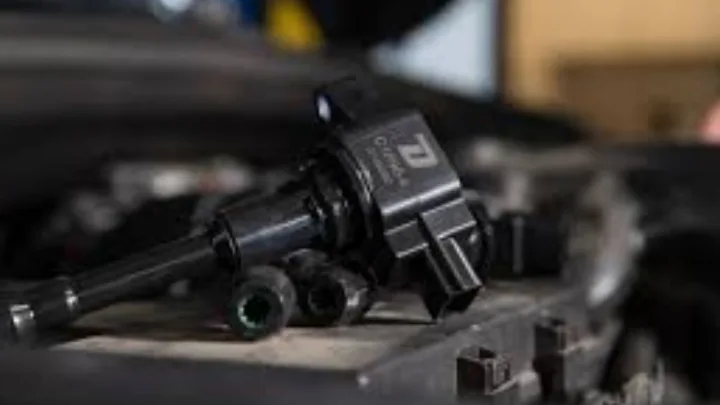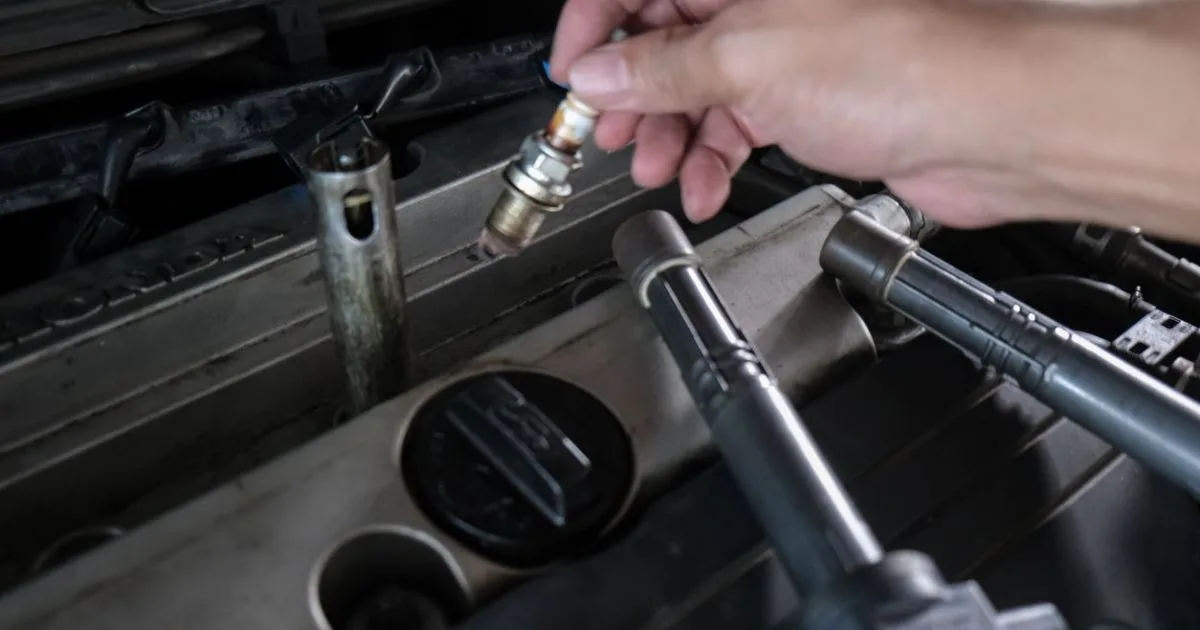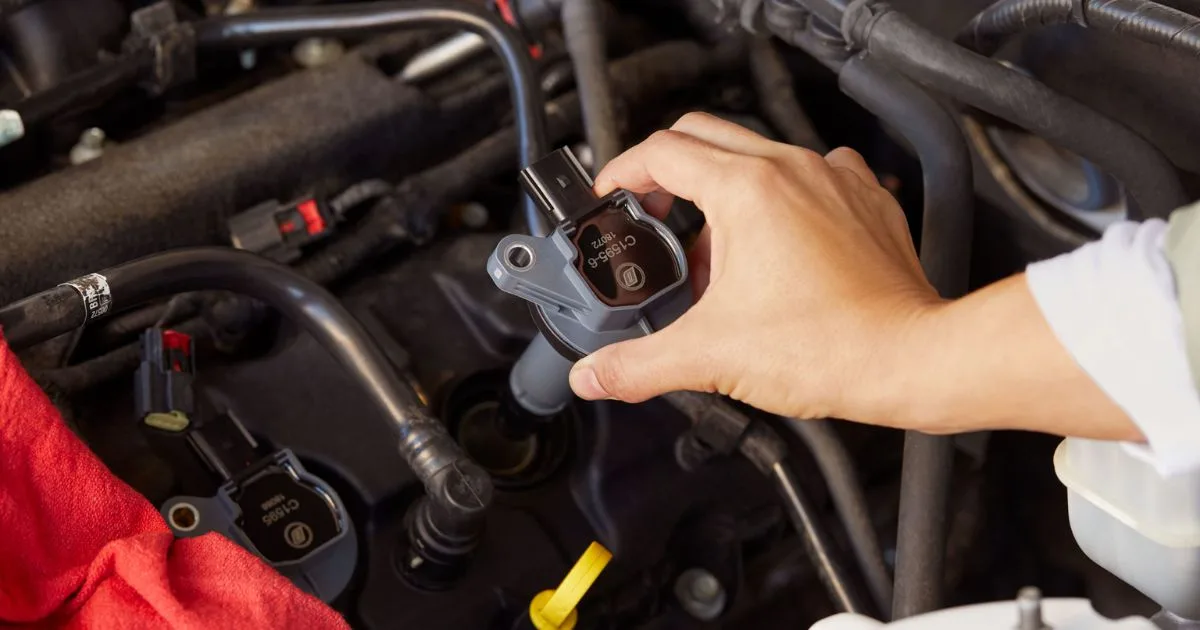
Testing car ignition coils ensures your engine runs smoothly. Follow this step-by-step guide to diagnose and fix issues efficiently.
Ignition coils are vital components in a car's engine. They convert the battery's voltage into the high voltage needed to create a spark in the spark plugs. A malfunctioning ignition coil can lead to engine misfires, poor fuel economy, and even engine damage.
To avoid these problems, it's essential to regularly test your car's ignition coils. This guide will walk you through the process of testing ignition coils, providing you with the knowledge to identify and resolve any issues. By maintaining your ignition coils, you can ensure optimal engine performance and longevity.
Introduction To Ignition Coils
Ignition coils are essential for your car's engine. They convert low voltage from the battery to high voltage. This high voltage ignites the fuel in the engine. Understanding ignition coils helps maintain your car's performance.
Purpose And Function
The main purpose of ignition coils is to create a spark. This spark ignites the air-fuel mixture in the engine. Without this spark, the engine cannot run. Ignition coils function by transforming the battery's 12 volts. They increase this voltage to thousands of volts. This high voltage is needed to jump the spark plug gap.
Related Post
5 Reasons Spark Plug Wires May Not Be Compatible With Your Vehicle
The Importance of a Distributor in Your Car: More Than Just Spark
10 Warning Signs Your Car’S Spark Plugs Need Replacing
Expert Tips: Testing Club Car Ignition Coil Parts Like a Pro
Common Types
There are several types of ignition coils. Each type has its own use and design.
| Type | Description |
|---|---|
| Canister Coil | Traditional design, used in older cars |
| Coil Pack | Multiple coils in a single unit |
| Coil-On-Plug (COP) | One coil per cylinder, modern design |
| Distributorless Ignition System (DIS) | No distributor, uses multiple coils |
 Symptoms Of Faulty Ignition Coils
Symptoms Of Faulty Ignition Coils
Symptoms Of Faulty Ignition Coils
Understanding the symptoms of faulty ignition coils can save you time and money. Faulty ignition coils can cause multiple issues in your vehicle. Identifying these symptoms early can help prevent further damage. Here are some common signs to look out for:
Engine Misfires
Engine misfires are a common symptom of bad ignition coils. Misfires occur when the spark plug doesn't ignite the fuel mixture. This can cause the engine to run poorly. You may notice a rough idle or a jerking sensation while driving.
Misfires can lead to increased emissions and reduced engine performance. The check engine light may also turn on. Pay attention to any unusual sounds from the engine. These could be a sign of misfiring.
Poor Fuel Economy
Poor fuel economy is another symptom of faulty ignition coils. Bad coils can cause incomplete combustion. This means your engine burns more fuel than necessary. You may find yourself refueling more often than usual.
Monitor your car's fuel efficiency regularly. A sudden drop in fuel economy can indicate ignition coil problems. Always take note of any changes in your car's fuel consumption patterns.
| Symptom | Description |
|---|---|
| Engine Misfires | Causes rough idle and jerking sensation |
| Poor Fuel Economy | Engine burns more fuel than necessary |
Required Tools And Equipment
Testing car ignition coils requires specific tools and equipment. Having the right gear ensures an accurate diagnosis. This guide will help you gather everything you need to test ignition coils effectively.
Essential Tools
To test ignition coils, you need some essential tools. These tools help you perform the tests accurately and safely.
- Multimeter: Measures voltage, resistance, and current.
- Spark Tester: Checks for spark presence.
- Wrench Set: Helps in removing ignition coils.
- Battery Load Tester: Ensures battery health.
Safety Gear
Safety should always be a priority when working on cars. Proper safety gear protects you from potential hazards.
- Safety Glasses: Protect your eyes from debris and sparks.
- Insulated Gloves: Prevent electrical shocks.
- Work Boots: Keep your feet safe from heavy objects.
- Fire Extinguisher: Handy in case of electrical fires.
Having these tools and safety gear will make your ignition coil testing process smooth and safe. Make sure to gather all these items before starting your tests.
Pre-test Preparations
Before testing your car's ignition coils, ensure you're fully prepared. Proper preparations will help you avoid accidents and mistakes. Follow these steps closely to ensure a smooth testing process.
Vehicle Safety Measures
Always prioritize safety when working on your vehicle. Wear safety gloves and safety glasses to protect yourself. Ensure your car is on a flat surface to prevent it from rolling. Use wheel chocks to secure the wheels if necessary.
- Wear safety gloves to protect your hands.
- Wear safety glasses to protect your eyes.
- Ensure the car is on a flat surface to prevent rolling.
- Use wheel chocks to secure the wheels.
These measures will keep you safe while working on your car.
Disconnecting The Battery
Before you start, disconnect the car battery. This step is crucial to avoid electric shocks. Locate the battery under the hood. You will find two terminals: positive (+) and negative (-).
- Use a wrench to loosen the nut on the negative terminal.
- Once loose, remove the negative cable and set it aside.
- Repeat the process for the positive terminal if needed.
Disconnecting the battery ensures no power flows through the ignition system. By following these pre-test preparations, you can test your car's ignition coils safely and effectively. Stay tuned for the next steps in mastering ignition coil testing.
 Visual Inspection
Visual Inspection
Visual Inspection
Mastering car ignition coils starts with a thorough visual inspection. This step helps in identifying obvious issues before diving into complex tests. Let's explore how to perform a visual inspection effectively.
Checking For Damage
First, look for physical damage on the ignition coil. Check for the following:
- Cracks or breaks in the coil housing
- Burn marks or discoloration
- Signs of corrosion or rust
Use a flashlight to inspect hard-to-see areas.
Damaged coils can lead to engine misfires and poor performance. Replace damaged coils immediately.
Inspecting Connections
Next, inspect the electrical connections of the ignition coil. Ensure all connections are secure and free from corrosion. Here's a quick checklist:
- Check the coil connector for loose or damaged pins.
- Ensure wiring harness is intact and not frayed.
- Verify the ground connection is tight and clean.
Clean any corroded connections with a contact cleaner. Tighten loose connections to ensure proper current flow. By performing a detailed visual inspection, you can spot many issues early. This simple step saves time and ensures your car runs smoothly.
Testing Primary Windings
Understanding how to test the primary windings of your car's ignition coils can save you time and money. This essential skill helps ensure your vehicle runs smoothly. Follow this step-by-step guide to master the process.
Using A Multimeter
A multimeter is a crucial tool for testing primary windings. It measures electrical resistance, voltage, and current. Here’s how to use it:
- Turn off your car's engine.
- Disconnect the ignition coil from the power source.
- Set your multimeter to the ohms setting (Ω).
- Place the red probe on the positive terminal.
- Place the black probe on the negative terminal.
- Read the resistance value displayed on the multimeter.
Interpreting Results
Interpreting the results is vital to determine the coil's health. Compare the resistance value to the manufacturer’s specifications.
| Coil Type | Normal Resistance Range (Ω) |
|---|---|
| Single-Coil | 0.4 - 2.0 |
| Multi-Coil | 0.3 - 3.0 |
- If the resistance is within range, the coil is healthy.
- If the resistance is too high or low, the coil may be faulty.
Consistent ignition coil testing ensures optimal vehicle performance. Always follow the recommended safety guidelines.
Testing Secondary Windings
To ensure your car's ignition coil works well, you need to test the secondary windings. These windings are crucial for producing the high voltage needed to ignite the fuel mixture in the engine. This guide will walk you through the steps to test these windings effectively.
Measuring Resistance
First, locate the ignition coil in your car. You can find it in the engine bay. Use a multimeter to measure the resistance of the secondary windings.
- Set your multimeter to the ohms (Ω) setting.
- Connect one probe to the positive terminal of the ignition coil.
- Connect the other probe to the high-voltage terminal.
You should see a reading on the multimeter. This reading shows the resistance of the secondary windings.
Evaluating Readings
Compare the multimeter reading with the manufacturer's specifications. These can usually be found in the car's manual.
- If the reading is within the specified range, the windings are good.
- If the reading is too high, there may be a break in the windings.
- If the reading is too low, it could indicate a short circuit.
Here is a simple table to help you evaluate the readings:
| Reading (Ω) | Condition |
|---|---|
| Within range | Windings are good |
| Too high | Possible break in windings |
| Too low | Possible short circuit |
Use this information to determine the condition of your ignition coil's secondary windings. Proper testing can help ensure your car runs smoothly.
 Reinstallation And Final Checks
Reinstallation And Final Checks
Reinstallation And Final Checks
Reinstalling car ignition coils correctly is crucial. You must follow this guide for effective reinstallation and final checks. This ensures your vehicle runs smoothly.
Reconnecting Components
Begin by reconnecting all components. Ensure you attach the ignition coil securely. Double-check all connections. Use a diagram if needed. This helps avoid mistakes.
Follow these steps:
- Attach the ignition coil to its mount.
- Reconnect the electrical connectors.
- Secure any bolts or screws.
- Check for loose parts.
Make sure each component is in place. A loose connection can cause issues. Tighten all screws firmly but do not over-tighten.
Ensuring Proper Function
After reconnecting, ensure proper function. Start the engine. Listen for any unusual sounds. The engine should run smoothly.
Perform these checks:
- Test the ignition system.
- Check the engine's idle speed.
- Observe for warning lights on the dashboard.
- Monitor engine performance while driving.
If you notice any issues, recheck the connections. Ensure every component is properly installed. This helps maintain engine performance.
| Step | Action |
|---|---|
| 1 | Reconnect ignition coil to mount |
| 2 | Reconnect electrical connectors |
| 3 | Secure bolts or screws |
| 4 | Start the engine |
| 5 | Check for unusual sounds |
Following these steps ensures your car's ignition system functions correctly. This prevents potential problems on the road.
Frequently Asked Questions
What Are Car Ignition Coils?
Car ignition coils transform battery voltage into the high voltage needed to ignite the fuel in the engine.
How Do You Test Ignition Coils?
Use a multimeter to measure resistance. Compare the readings with manufacturer specifications to determine coil health.
What Are Signs Of A Bad Ignition Coil?
Common signs include engine misfires, reduced fuel efficiency, and difficulty starting the vehicle.
Can A Bad Ignition Coil Damage The Engine?
Yes, a faulty ignition coil can cause misfires, leading to potential engine damage if not addressed promptly.
Related Post
The True Cost of Fixing Your Car’S Glow Plugs
The Ultimate Guide to Spark Plug Cable Compatibility for Your Vehicle
How to Budget for Ignition Coil Replacement: Tips And Tricks
How to Effectively Test Your Magneto Ignition Coil: Tips And Tricks
5 Common Mistakes When Replace a Distributor Cap Could Stop Your Car
How an Car Ignition Box Works: From Key Turn to Engine Roar
Conclusion
Mastering car ignition coils ensures your vehicle runs smoothly. Regular testing can prevent unexpected breakdowns.
Follow this guide to keep your car in top shape. Enjoy a reliable ride by maintaining your ignition system. Keep learning and stay ahead with your car maintenance skills.
Disclosure
Some links may be affiliate links. That means we may earn a small commission at no extra cost to you.